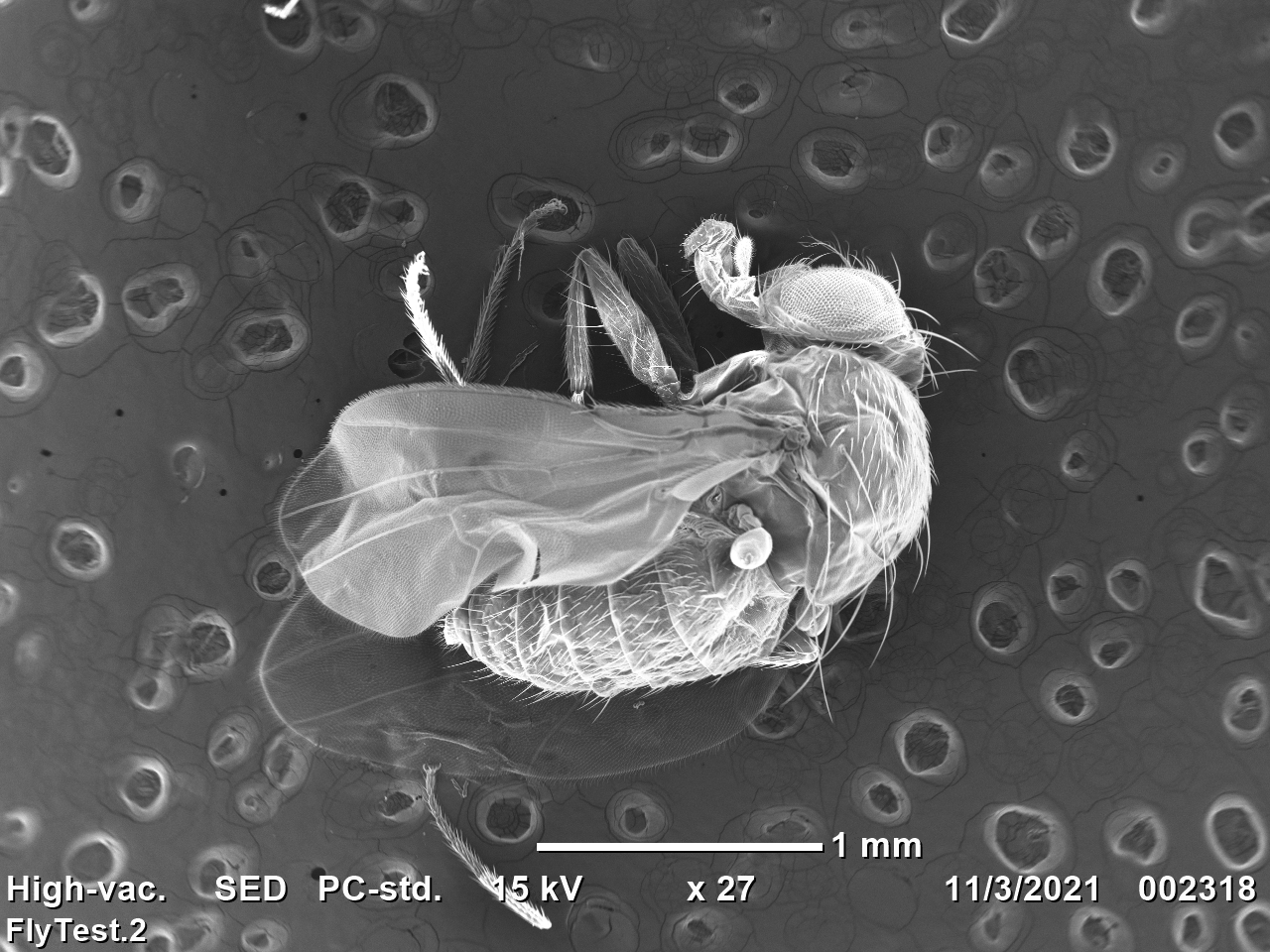Suiting Up with NanoSuit for Imaging in the SEM
FAU Owls Lab uses a unique biofilm for imaging microorganisms in the NeoScope Tabletop Scanning Electron Microscope
While there are traditional methods for preparing and looking at insects and plants in the Scanning Electron Microscope, such delicate samples can easily dehydrate and crumple under vacuum. So, when Dr. Tricia Meredith, Director of Research for Florida Atlantic University’s on-site lab school,
A.D. Henderson University School and
FAU High School learned about a unique biofilm for coating microorganisms for the SEM, she and Research Technician Jamie Knaub were eager to give it a try. With the help of a grant, they were on their way.
They’ve just begun testing out the
NanoSuit® using the NeoScope benchtop SEM in the school’s Owls Imaging Lab and are getting good imaging results. Their entomological specimens appear to be in a more natural state, and they are already on their way to helping students and researchers using the biofilm.
Their first subject was a hairy spider that helped them learn what worked and what they needed to do.
“The spider was a pretty cool test,” says Knaub, who watched a video to learn how much of the solution to pipette onto the spider positioned on the sample holder. “Spiders don’t do well in a critical point dryer,” she says of the typical sample preparation tool for microorganisms. In the image one can see that the spider looks more realistic. “We don’t have a ton of experience yet. The sample just seems to absorb the solution. It has a very interesting viscosity; it seems to fold back onto itself. It just takes a thin layer on top of it. We’re trying to perfect that.” After fully coating the specimen, she took filter paper to draw off any excess. It was trial and error, but she learned that more of the Nanosuit solution could be applied as needed and reapplied later for additional imaging. Like their other specimens, they kept the spider in their repository to be used again.

Their success opened the door for research faculty member Dr. Jennifer Krill and her high school student mentee, Ms. Saachi Mody, to use the technique to observe tumor expression in fruit flies. The series of images, ranging from 100-200 µm made for a nice timeline showing changes over time. The work is part of the high school student’s science research project. The school puts enormous emphasis on student research and begins using the tools of science, such as the SEM, in the lower grades. The microscope is used by researchers at the university as well. Many SEM images make their way into reports and posters.
Meredith and Knaub look forward to trying some plant materials, which tend to shrivel in the critical point dryer. They’ll experiment more during the summer and will be ready to give a new crop of students of all ages a special look into the biological materials they are studying.
Watch a demonstration video here: